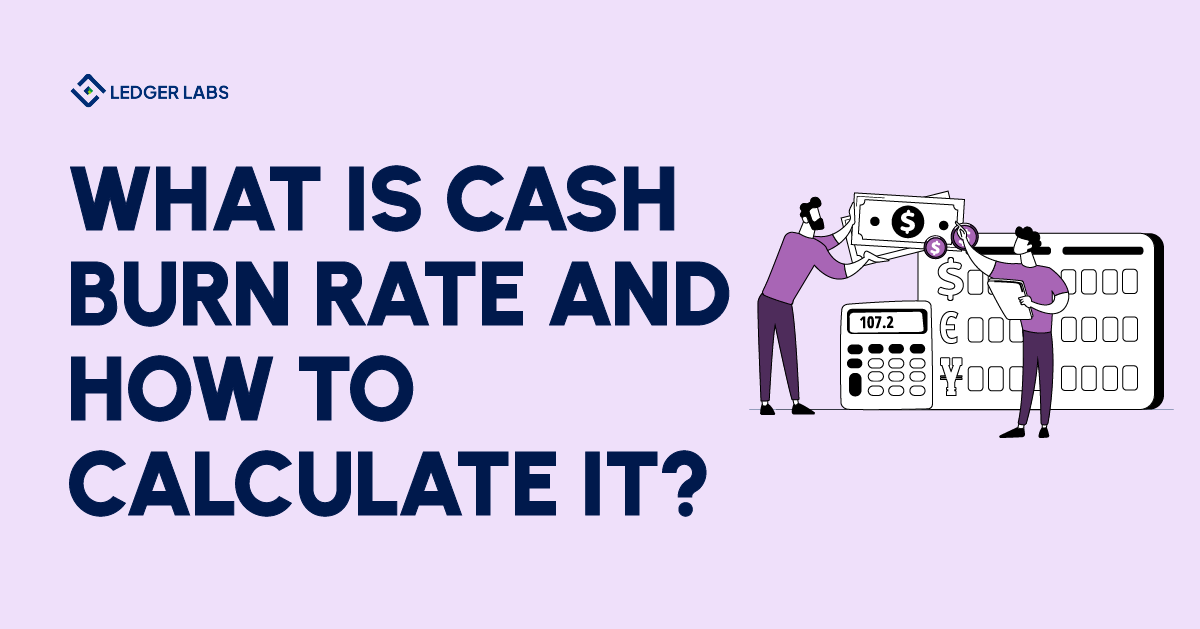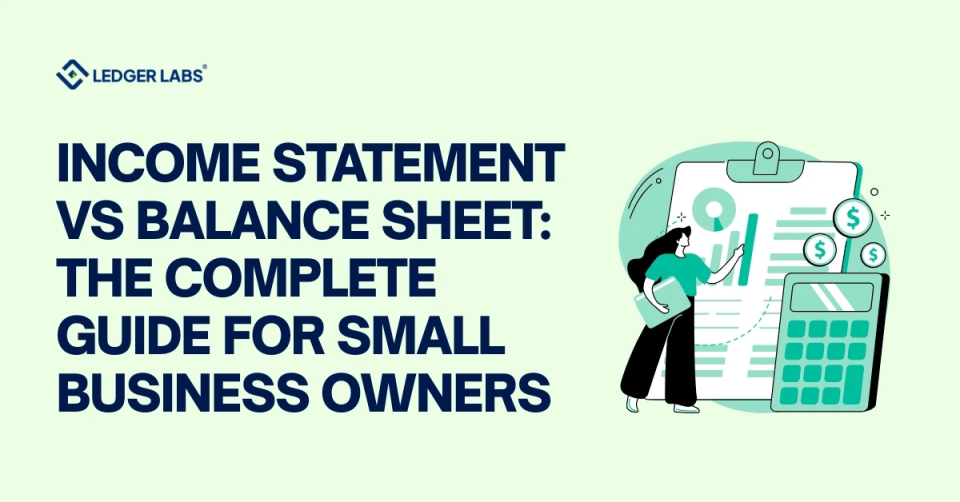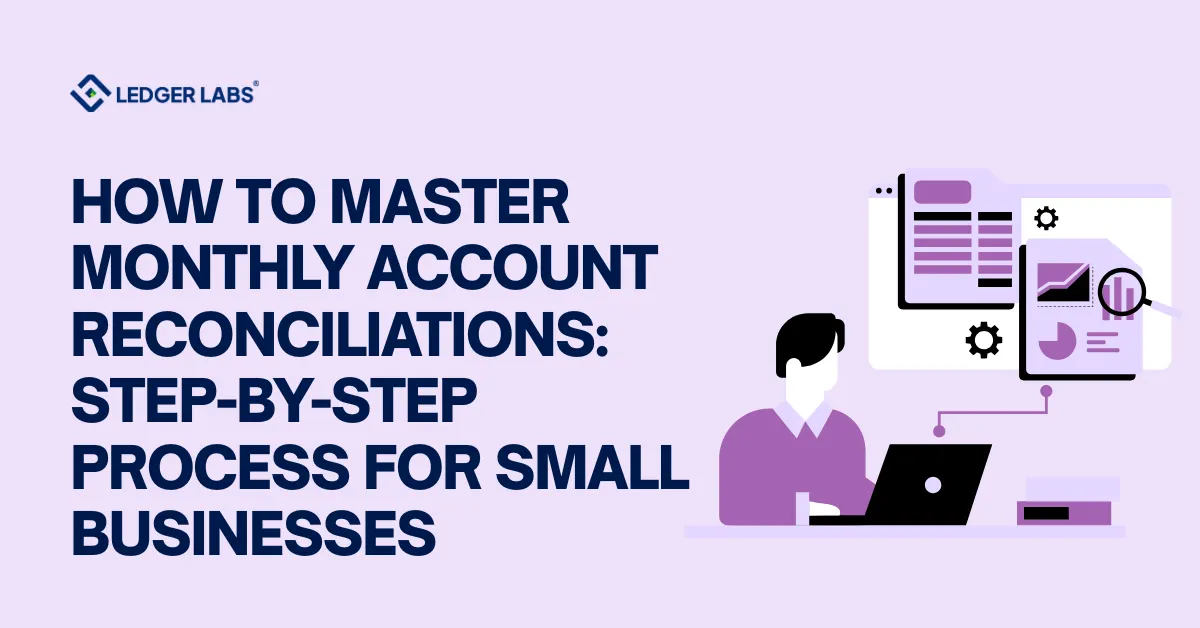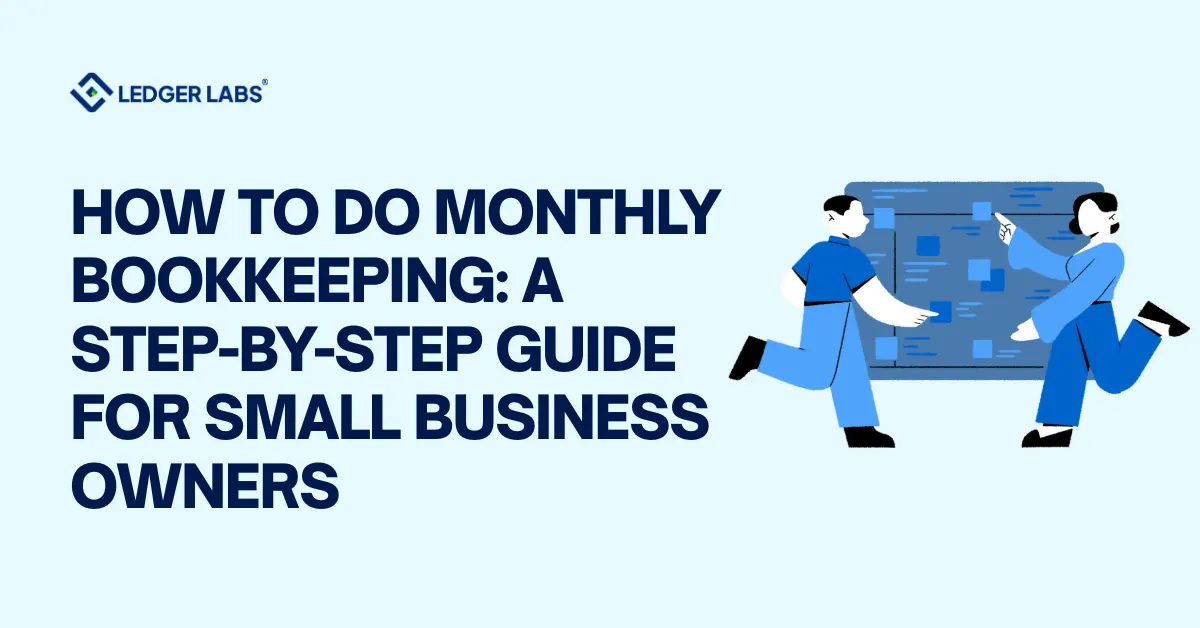1. Cash Burn Rate measures how quickly a company uses its cash reserves during a specific period, often reported monthly, to monitor financial health and runway duration.
2. Divide net cash spent (total outflows minus inflows) by the number of months in the period analyzed. This helps predict operational sustainability.
3. It’s vital for startups and businesses relying on external funding, offering insights into how long cash reserves will last under current expenditure trends.
4. Regular tracking enables businesses to adjust spending, increase revenues, or secure funding proactively before running out of resources.
Cash burn rate is a very vital financial metric concerning businesses, especially startups and growth-phase companies.
That means it shows the rate at which a company uses up its working capital or cash reserves.
In simple words, it is just how fast a business is spending its cash before generating enough positive cash flow from its operations.
However, there are more layers to this term. Without further ado, let’s start exploring them to help you understand better.
Why do businesses need to monitor Cash Burn Rate?
It is important for businesses to closely monitor their cash burn rate.
Why?
Well, the reasons are multi-fold as outlined below:
- Sustainability and longevity: A controlled cash burn rate guarantees that a company can expand its operations and continue to run without the immediate risk of cash shortage. Who is this most important for? The companies that are pre-revenue or just expanding, with cash outflows often exceeding the inflows.
- Improves decision making: Businesses can decide wisely about their cost structures, growth strategies, and investments. It acts as a compass for several businesses, helping them understand when to scale up or start compressing their expenditures.
- Attracts investors: Businesses looking for funding usually need a well-managed burn rate. Investors and analysts typically use this information to understand the company’s long-term success rate. In this case, a rising burn rate can be a major red flag for investors and analysts.
Understanding the Components of Cash Burn Rate
There are several key areas that you need to understand that can help you know what cash burn rate really is. Some of the major components of cash burn rate are:
1. Fixed expenses
Fixed expenses are more like the common, predictable expenses that do not usually fluctuate the production or sales level in the business. In any case, it is important that you keep track of this figure.
In other words, you need to calculate the cash burn rate since it indicates the baseline costs a business incurs, no matter how they are operating. Some instances of this include:
- Rent or mortgage payments
- Salaries and wages
- Insurance premiums
- Utilities
- Loan repayments
You should be fully aware of fixed expenses because they constantly use up your cash reserves, even if your business isn’t generating enough revenue.
Read more about small business expenses.
2. Variable expenses
In contrast, variable expenses do fluctuate with the level of business operations. In other words, these are the types of expenses that tend to rise up with higher production or sales, but start to decline when business activities slow down. Some of the major instances of variable expenses include:
- Cost of Goods Sold (COGS)
- Transportation and Shipping Costs
- Costs of Marketing and Advertising
Understanding variable expenses is important because it is immediately tied to your business activities and operations. Moreover, effectively managing these expenses can greatly impact the total cash burn rate, especially for seasonal or rapidly growing businesses.
3. Cash inflows
Cash inflows are the funds that a company receives, mainly from its business operations. In layman’s language, it is basically the money a business gets, mostly from its operations.
More importantly, this is a key component that helps big time to manage the cash burn rate as it counterbalances the cash outflows. The principal cash inflow sources include:
- Revenue from sales
- Investment income
- Financing
- Tax refunds or credits
Cash inflows are indispensable if you want to maintain the company’s cash reserves and boost its runway. To be more precise, a sustainable company’s objective is to steadily grow its cash inflows over outflows to the point where it no longer requires outside funding and has a lower cash burn rate.
Cash Burn Rate Formula and Calculation
You can usually find Burn Rate calculation in two forms, Gross and Net Burn rate.
Gross Burn Rate
Gross burn rate: The phrase “gross burn rate” describes the total monthly operating expenses of a business. Furthermore, the gross burn rate formula can be calculated as:
Gross Burn Rate (%) = Monthly Operating Expenses / Starting Capital x 100 To evaluate it, we need two key figures:
- Your monthly operating expenses
- Your starting capital
Monthly operating costs can be anything between lease payments, employee salaries, and utility bills. The initial funding is basically the initial cash you put into your business. This sum can now come from your own savings, a loan from a third party, or an investment fund.
Let’s consider an example to understand this better:
Assume that your business incurs monthly expenses of $4,200 in operational costs while you started with the venture with a loan of $60,000.
Therefore, $4,200 / $60,000 = 0.07
When we multiply this figure by 100, the result yields 7%. Hence, the monthly burn rate is 7%. In this case, you use up 7% of your initial capital each month.
Need help calculating your cash burn rate?
Connect with our expert accountants!
Net Burn Rate
Net burn rate: This term helps to reflect the company’s monthly financial loss. Essentially, it is the distinction between earned revenues and the gross burn rate. Typically, it is limited to the gross burn rate. Therefore, the net burn rate formula is:
Net Burn Rate (%) = (Revenue – Operating Expenses) / Starting Capital x 100 When you are calculating your net burn rate, it involves three key areas:
- Your monthly income
- Monthly operational costs
- Your starting cash or total cash
When you evaluate it in figures, it is done by subtracting your operating costs from the revenue. After it is done, we divide this operating income by the initial cash you put into your business. An alternate method is to calculate the burn rate over a given time period using your total cash at that point.
Now, in case your financial records are updated, you can easily simplify this process too! To be precise, you can find your operating income on the income statement or your cash flow statement as well.
For instance, let’s say you are running a store that has just begun generating sales. You are now incurring monthly expenses of $4,500 to operate. However, just last month, your revenue was only $3,000.
When evaluating your net burn rate, it shows:
($3,000 – $4,500) / $60,000
When you look closely at the figure, the operating income indicates a negative value. This means just one significant thing: “Your expenses sadly surpass your earnings.” As a result, there has been no positive cash flow.
Thus, – $15,000 / $60,000 = 0.025
When you multiply this result by 100, you can see that your net burn rate is 2.5%.
Importance of Accuracy in Calculations
There are multiple reasons why calculation accuracy is highly vital:
- It gives an honest overview of the company’s financial standing, helping check if expenses are unsustainable in any way.
- This is a crucial metric, as it can either make or break the confidence of investors. Thus, inaccuracies can result in misled judgements.
- It is a metric that allows management to make sound decisions on factors like fundraising, cost-cutting, etc.
If you want to maintain equilibrium in financial stability, this is the metric to be vigilant about. If you somehow aren’t, things can go downhill in a moment, and your deck of cards can tumble down.
Interpreting Cash Burn Rate
It takes more than just analyzing the numbers to interpret the cash burn rate. In reality, it is about understanding what these numbers reveal about a business’s financial health and operational efficiency. Here’s how we can analyze the results more effectively:
- Contextual Analysis: It is important to understand the stage of your industry or the phase of your business. In other words, a high burn rate may be normal for a growing startup, but it can raise eyebrows for a well-established company.
- Trend Analysis: You should look at the burn rate over time. You should understand whether it is rising, declining, or stable. This means that trends can indicate changing business conditions or industry dynamics.
- Revenue Growth Comparison: This is where you should closely examine the burn rate in relation to revenue growth. In layman’s language, a high burn rate can surely be sustainable if it is accompanied by consistent revenue growth.
- Runaway Estimation: You can use this metric to evaluate the company’s financial runaway. Furthermore, it can give you a clear picture of how long the business can continue to run at its current burn rate using its existing cash reserves.
Need help interpreting your cash burn rate?
Connect with our expert accountants!
What High and Low Cash Burn Rates Indicate?
There are multiple things that high and low cash burn rates can represent. However, as accountants we cannot just say to someone, “Hey, this is the ideal burn rate.” We mean, there’s no single “ideal” burn rate since it heavily relies on your industry, growth stage, and funding conditions.
In general:
- If a company exhausts its cash reserves too quickly, it can face the danger of fund depletion, resulting in bankruptcy.
- In contrast, if a business is too conservative with its funding decisions, it can potentially risk underinvesting in growth and development. This, in turn, can result in falling behind the competition.
High Cash Burn Rate
- Shows significant exhaustion of rapid cash.
- Suggests investment in growth areas, including marketing, R&D, or scaling operations.
- Indicates danger if not in line with strategic objectives or if it fails to produce a reasonable revenue or market share increase.
Low Cash Burn Rate
- Shows efficient resource usage, alongside a conservative approach to spending.
- Can indicate slower growth. However, it can still hint at consistency and a long-term business plan.
6 Tips for Managing and Reducing Cash Burn Rate
In any case, you can still manage and reduce your cash burn rate. Here are 6 tips to do it:
- Monitor your expenses: The first thing you should do is conduct an expense survey in order to identify the areas where you can potentially cut back your expenses.
- Review your recurring costs: You need to scrutinize your subscriptions alongside recurring expenses that can help in potential savings.
- Streamline your approvals: In order to prevent delays and overspending, start having an effective process for expense approvals.
- Minimize overhead: You can also minimize certain unnecessary fixed costs, such as equipment rentals or office spaces.
- Negotiate better terms: Renegotiate agreements to acquire better terms for payments with suppliers and vendors.
- Get professional advice: Consult with financial experts for tailored advice on managing your burn rate.
Successful Companies with Controlled Burn Rates
You can usually see that successful companies show a disciplined approach to tackling their cash burn rates. Here are a few companies that are still ahead in the line:
- Apple, Inc.: Apple is known around the world for its significant cash reserves, managing its cash flow over the years. The company’s success can be partially attributed to its controlled operational spending in relation to its high revenue. This enables it to invest in market expansion, growth, and innovation.
- Microsoft: Microsoft has always managed to have a robust balance sheet with substantial cash reserves, indicating sound financial management. The company’s steady growth has been boosted by its strategic investments in AI and cloud computing, all while keeping a tight rein on burn rates.
- Amazon: During its early years, Amazon went through a significant cash burn rate since it aggressively invested in expansion. But over time, it was able to keep this under control by starting to diversify its revenue sources (like AWS), which resulted in more stable financials.
Lessons Learned from Businesses that failed to Manage Cash Burn Rate
This is basically the flip side of the coin. Just like there are companies with sound cash burn rates, we cannot ignore the ones that drowned due to its uncontrolled cash burn rates. Here are a few of their pitfalls:
- Focusing more on growth over profitability: We Work prioritized aggressive expansions, which ran them dry before achieving profitability.
- Misalignment between product-market fit and expenditure: If you’re focusing more on burning cash to get customers for a product that doesn’t actually address the real need, it can be a big red flag. Juicero is a name that comes to mind. Its high-end juicer with limited functionality gradually pushed it downhill.
- Poor financial planning and forecasting: Companies can be vulnerable when cash runs low due to multiple reasons, including but not limited to overestimating revenue, underestimating costs, etc. Quibi, which is a short-form video streaming platform, failed to understand user behavior. Soon, it ran out of funding before uncovering its footing.
5 Key Tips for Maintaining a Healthy Cash Burn Rate
You need to watch several factors closely to ensure you have a healthy cash burn rate. Why? The reason is simple. This metric helps people determine the success and wellbeing of their business.
Here are some key tips to maintain a healthy cash burn rate:
- Regular financial review: Start making it a habit of reviewing your financial statements and forecasts closely. This can help you recognize trends, manage cash flow, and make sound decisions about expenses and growth.
- Cost-benefit spending analysis: Are you making a substantial financial decision soon? Before you make any financial commitment, conduct a comprehensive cost-benefit analysis. This ensures one major thing: “Every cent spent benefits the business and its long-term goals.”
- Focus on core business areas: Your resources should be added to the areas that actually help your business drive growth and revenue. Start avoiding to spend on areas that aren’t really necessary and don’t align with your business’s objectives.
- Start streamlining operations: This is the time to start looking for ways to maximize your operational efficiency. This might entail contract negotiation, outsourcing non-core activities, or automating procedures to cut expenses.
- Seek professional advice: If you’re not in the right headspace to control the different areas of this aspect, the best thing to do is go to someone who knows their way around. Never hesitate to seek help in areas like investment strategies, financial management, and tax planning (if need be).
In conclusion
Having a grip on your cash burn rate is all about understanding what works and what doesn’t for your company. Mainly, you’ve to perform a list of trial and error to finally get a clear picture.
But, here’s the thing: you and your team are ultimately the real captains behind the helm. In simple words, your team will understand your spending patterns better than anyone else. Thus, never be afraid to tweak a decision if the primary one didn’t work out as planned. Start adjusting your burn rate to align it with your goals and plans.
To be honest, your company’s burn rate is a good indicator of your spending and runaway tendencies, but it is not the only tool you will use to figure out growth. There are more layers to this than many can understand.
To be precise, you also have to be vigilant about your company’s aspirations, the time and resources of your team, and the business’s future. After you have looked at it from every specific angle, only then can you determine what’s actually happening behind the scenes.
Still confused? Don’t be.
Get in touch with our accounting and bookkeeping experts who have more than 12 years of experience. Get instant solutions and effective implementation today.












